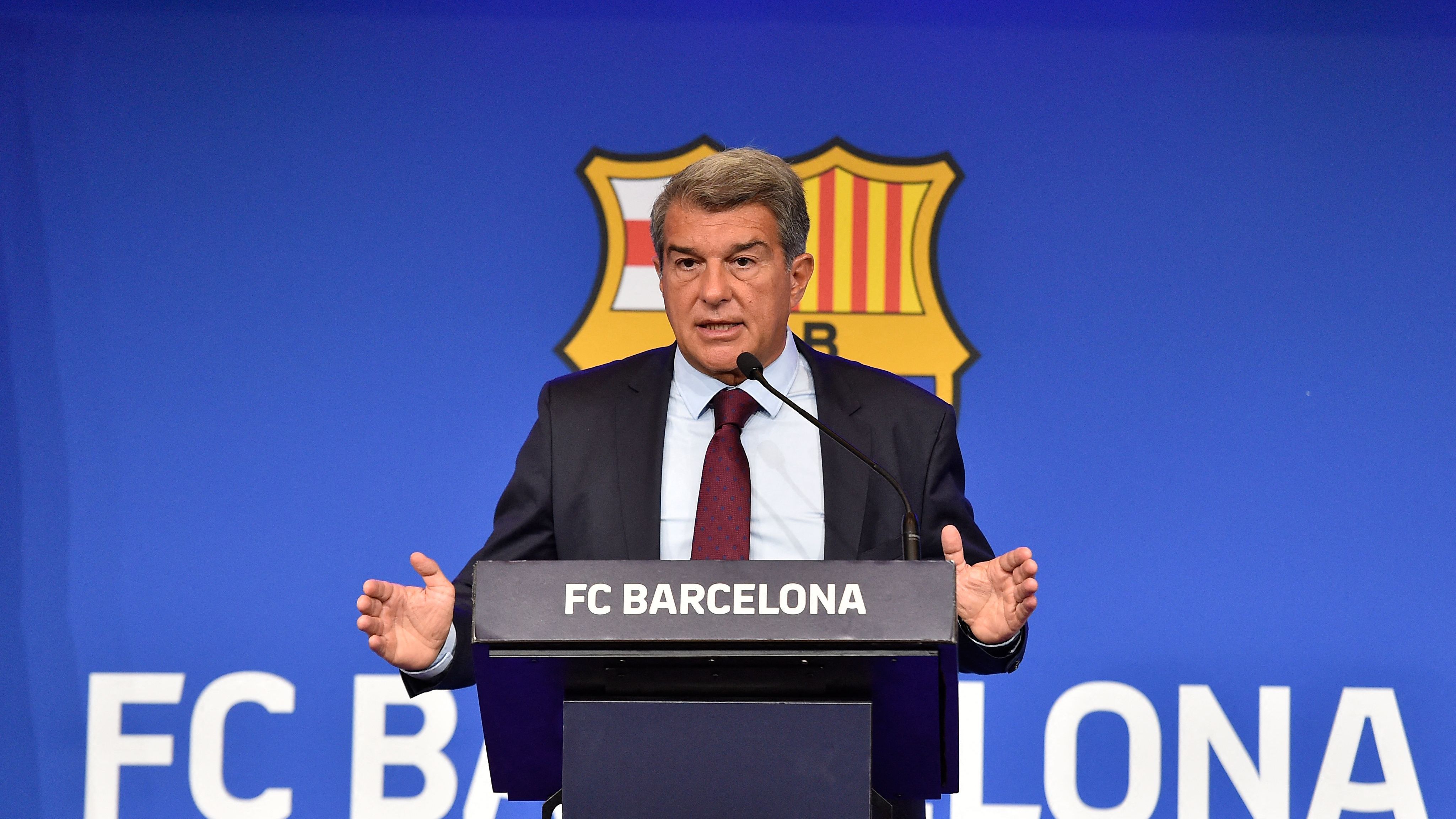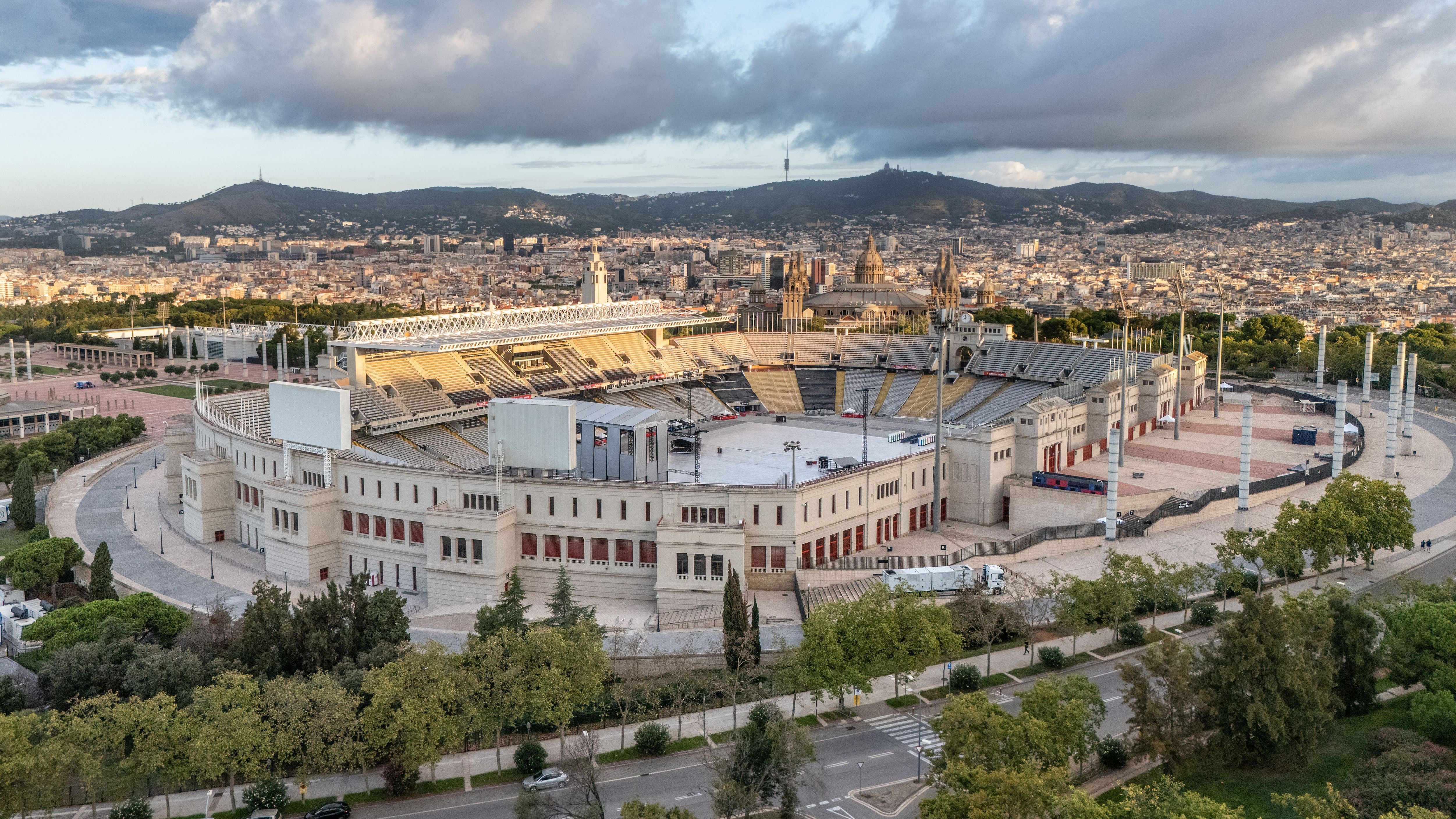


Unlocking Barcelona’s Camp Nou Potential: A Strategic Leap Forward
In a move that highlights Barcelona’s Camp Nou renovation as a pivotal step in the club’s evolution, officials have secured the necessary approvals to breathe new life into their historic stadium. This development underscores the balance between fiscal prudence and emotional ties, as the team weighs options for optimal revenue generation amidst ongoing transformations.
Camp Nou Renovation: Current Developments and Choices
With regulatory hurdles cleared, Barcelona now holds the Phase 1A permit, enabling up to 27,000 attendees at the updated venue. Yet, in a calculated decision, the club is sticking with their temporary base at Montjuic’s Lluis Companys Stadium. Experts within the organization argue that the superior crowd size at Montjuic translates to greater earnings per game, making it a smarter interim strategy over sentimental returns to a half-ready Camp Nou.
Espai Barca Vision: Future Expansions and Approvals
This choice aligns with the expansive Espai Barca initiative, recognized as a groundbreaking effort to enhance infrastructure across European soccer. Plans include accommodating 47,000 spectators in Phase 1B, which is crucial for gaining UEFA’s nod for elite competitions like the Champions League. Vice President Elena Fort has floated the idea of a spectacular re-entry timed with the club’s 126th milestone in late November, labeling it as a prime occasion for celebration.
Supporter Reactions and Long-Term Benefits
Fans have expressed frustration over the prolonged absence from their traditional ground, but leadership maintains that this approach fosters enduring financial and competitive advantages. The extra time facilitates thorough inspections and certifications of the refurbished sections, guaranteeing compliance with rigorous safety protocols from both regional and continental bodies.
Financial Insights from Leadership on Stadium Modernization
Treasurer’s Reflections on Timely Upgrades
During a key assembly, Treasurer Olive admitted the oversight in delaying the overhaul of Barcelona’s legendary stadium: “We ought to have undertaken this reconstruction much earlier; we’re behind schedule. This is essential for matching the top teams globally. For the 2024-25 season, we’re seeing €175 million ($204m) in stadium earnings, which could rise to €250m ($291m) without changes, yet the revamped facility might push us to €400m ($466m).”
Echoes of Ambition in Leadership Statements
This declaration emphasizes the project’s significance for the club’s fiscal rebound. President Laporta’s sentiments mirror these, portraying the reimagined Spotify Camp Nou as an emblem of solidarity and forward-thinking vision.
Laporta’s Vision for the Stadium’s Legacy
“Spotify Camp Nou represents the shared aspiration of Barcelona enthusiasts and a heritage for those to come,” Laporta expressed. “We’ve shown resolve in reviving this paused endeavor. Our community deserves to witness and experience this vision. We’ve put in relentless effort to secure the city approvals for our return, and with this achievement, heartfelt acknowledgments are in order.”
Espai Barca’s Deeper Significance and Challenges
Beyond Infrastructure: Preserving Identity
Both Olive and Laporta stress that Espai Barca transcends mere construction and profits-it’s a declaration of the club’s core values. The upgraded stadium aims to level the financial playing field with Europe’s leading outfits while safeguarding FC Barcelona’s soul in its original stronghold.
Project Overview and Controversies
Valued at approximately €1 billion ($1.17bn), this initiative has faced intense examination in Barcelona’s recent timeline. The building agreement went to Turkish contractor Limak, even though it ranked lowest technically against Spanish firms like Ferrovial and FCC. Limak’s bid required a substantial initial outlay of about €200m ($233m), far exceeding the €12m ($14m) from rivals, sparking debates on openness and sustainability. Officials justify the selection by highlighting Limak’s ability to adhere to critical timelines set by UEFA and local regulators.
Aiming for a Multifunctional Hub
The ultimate aim is to evolve Spotify Camp Nou into a cutting-edge venue for sports and events, providing steady income throughout the year. Once finalized, it will headline the Espai Barca network, incorporating a state-of-the-art Palau Blaugrana and enhanced training zones.
Commercial Alliances and Future Prospects
Strengthening Ties with Spotify
Outside of matches, Barcelona has fortified its business foundation via a prolonged deal with Spotify. This extended pact secures the streaming service as the main backer through 2030 and maintains naming rights until 2034, offering financial stability during renovations. The partnership is celebrated as an ideal blend of athletic passion and worldwide digital trends.
Next Steps and Economic Impact
Having obtained the Phase 1A authorization, the focus shifts to the broader Phase 1B clearance, which would permit 47,000 fans at the renovated Camp Nou. Vice President Elena Fort is confident, noting that it’s largely a procedural matter with the physical work already done.
Anticipated Return and Revenue Growth
Upon approval, the club’s eagerly awaited homecoming might align with a high-profile event near their November celebration. The upcoming period is vital financially, as Barcelona targets a surge in stadium income from €175m to potentially €400m per year once fully active. This boost could dramatically aid the club’s recovery from past economic challenges and regulatory constraints in La Liga.
Background on Camp Nou’s History and Challenges
Camp Nou, the iconic home of FC Barcelona, has stood as a symbol of Catalan pride and football excellence since its inauguration in 1957. Over the decades, this massive stadium has hosted countless historic matches, from European finals to World Cup games, making it a cornerstone of global sports culture. However, as time has passed, the facility has faced significant wear and tear, prompting discussions about a much-needed rebuild. Recent statements from Barcelona’s treasurer have highlighted just how overdue these renovations are, emphasizing the practical and symbolic importance of modernizing this legendary venue.
The Treasurer’s Recent Acknowledgment
In a candid address, Barcelona’s treasurer openly admitted that the rebuild of Camp Nou has been long overdue, pointing to structural issues and outdated infrastructure that have accumulated over years of heavy use. This acknowledgment comes at a time when football clubs worldwide are investing in state-of-the-art facilities to enhance safety, sustainability, and fan engagement. The treasurer stressed that ignoring these problems could jeopardize not only the club’s operations but also its financial health, especially with rising maintenance costs and evolving fan expectations.
Key points from the treasurer’s statements include:
- Aging Infrastructure Risks: Elements like seating, lighting, and even the pitch drainage system have not kept pace with modern standards, leading to frequent disruptions during events.
- Financial Implications: The treasurer noted that delaying the project further could result in escalating costs, potentially impacting Barcelona’s budget for player acquisitions and youth development programs.
- Regulatory Pressures: New UEFA and local regulations demand higher safety and accessibility standards, which Camp Nou currently struggles to meet without significant upgrades.
This transparency from the treasurer is refreshing, as it underscores a commitment to addressing these challenges head-on, rather than sweeping them under the rug.
Significance of the Renovation Project
The proposed renovation of Camp Nou isn’t just about fixing cracks; it’s about transforming the stadium into a multi-purpose hub that aligns with Barcelona’s vision for the future. At its core, this project aims to blend tradition with innovation, ensuring that the stadium remains a vital asset for the club and the community.
Economic and Community Benefits
One of the most exciting aspects of the Camp Nou rebuild is its potential economic impact. The treasurer highlighted how a revamped stadium could boost local tourism and create jobs, turning the area into a year-round destination. For instance:
- Job Creation: Construction phases alone could generate thousands of employment opportunities in architecture, engineering, and event management.
- Revenue Streams: Upgraded facilities might include premium seating, corporate boxes, and even retail spaces, helping Barcelona generate additional income beyond match days.
- Sustainability Features: Plans could incorporate eco-friendly elements like solar panels and efficient waste management, aligning with global trends in green stadiums and appealing to environmentally conscious fans.
Enhancements to Fan Experience and Safety
From a fan’s perspective, the renovation promises to make attending matches more enjoyable and secure. The treasurer emphasized that improving accessibility for all attendees-such as adding ramps for wheelchair users and modernizing restrooms-would make Camp Nou more inclusive.
Some key upgrades on the table include:
- State-of-the-Art Technology: Think immersive LED displays, high-speed Wi-Fi, and interactive apps that enhance the match-day experience, keeping younger audiences engaged.
- Expanded Capacity and Comfort: While preserving the stadium’s historic charm, renovations could optimize seating for better views and comfort, potentially increasing capacity without losing that intimate Barcelona feel.
- Safety Upgrades: Reinforced structures and advanced emergency systems would address potential seismic risks and crowd management issues, ensuring peace of mind for everyone inside.
In essence, these changes could elevate Camp Nou from a mere venue to a cultural landmark that fosters community spirit and innovation.
Looking at the Bigger Picture: Challenges and Opportunities
While the rebuild presents clear opportunities, the treasurer also touched on potential hurdles, such as funding and timeline delays. Securing investments through partnerships or club revenues will be crucial, but this could pave the way for a more resilient Barcelona in the long run. For example, integrating smart technology might not only cut operational costs but also open doors to new sponsorships focused on Camp Nou keywords like “sustainable football infrastructure.”
Funding Strategies and Timeline
Breaking down the financial side:
- Public-Private Partnerships: Collaborations with city officials and private investors could share the burden, making the project more feasible.
- Phased Approach: Instead of a full shutdown, a staged renovation might allow the stadium to host events during off-peak times, minimizing disruptions.
- Long-Term ROI: The treasurer pointed out that these investments could yield returns through increased ticket sales and merchandising, tied to the renewed buzz around “Camp Nou rebuild updates.”
This strategic planning shows how the renovation isn’t just a fix-it’s an investment in Barcelona’s legacy.
Why This Matters for Football Enthusiasts
For fans and stakeholders, the Camp Nou rebuild represents a chance to preserve a piece of history while embracing the future of sports. By addressing these issues now, Barcelona is setting a benchmark for other clubs dealing with aging stadiums, making this story relevant to anyone interested in football’s evolution. With elements like enhanced fan zones and better connectivity, the renovated Camp Nou could become a model for what modern sports venues should aspire to be.









